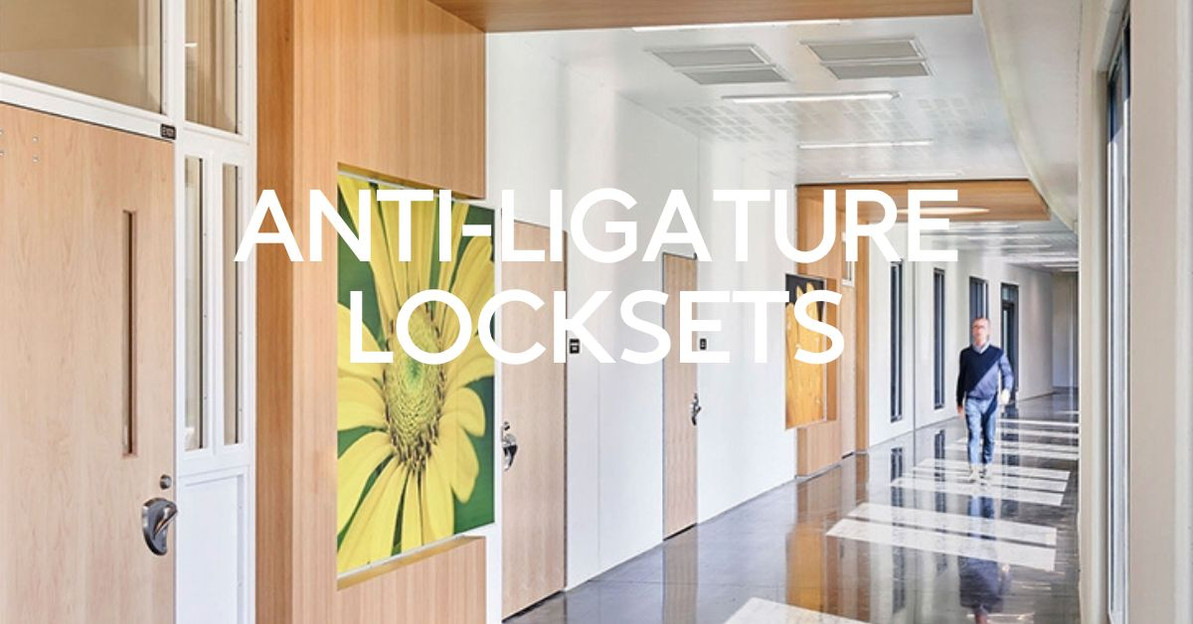A Guide to Choosing Anti-Ligature Hardware
Anti-ligature hardware is essential in ensuring safety within various facilities, such as healthcare, custodial, and mental health institutions. Such devices are designed to prevent individuals from tying or fastening something securely for self-harm. Selecting the right anti-ligature hardware can be a complex process due to the various factors to consider, including regulations, quality, and the facility's specific needs. This comprehensive guide will explore the details of choosing the right anti-ligature hardware for your facility.
Understanding Anti-Ligature Hardware
Before diving into the selection process, it is critical to understand what anti-ligature hardware is and its importance. These specially designed pieces of hardware reduce the risk of individuals attaching a rope or cord-like object, thus eliminating the potential for self-harm. They are usually intended to be flush against a surface, leaving no protrusions to be used as ligature points.
The Importance of Quality and Standards
Quality should be your top priority when purchasing anti-ligature hardware. These devices save lives; hence, compromising quality could have devastating consequences. Check if the manufacturer complies with recognized industry standards, such as those set by the American National Standards Institute (ANSI), the Builders Hardware Manufacturers Association (BHMA), and the National Health Service (NHS) in the UK. Certification from these bodies ensures that the products have been tested for safety and durability.
Identifying Your Needs
The specific needs of your facility are a primary consideration in choosing the right hardware. The appropriate choice will depend on the level of risk and the characteristics of the people who use the facility. For instance, mental health facilities with high-risk patients may require more advanced solutions than those serving low-risk populations.
Understand the demographics of your facility and anticipate the potential risks to identify the best-suited anti-ligature hardware.
Types of Anti-Ligature Hardware
Anti-ligature hardware comes in various forms, each designed to secure a different facility part.
- Door Hardware: Anti-ligature door handles, hinges, locks, and closers are designed to prevent self-harm while maintaining the door's functionality.
- Bathroom Hardware: Bathroom fixtures, such as anti-ligature shower heads, towel hooks, and toilet roll holders, are designed to break under excess weight.
- Window Hardware: Anti-ligature window restrictors and handles are used to prevent ligature while allowing natural light and ventilation.
- Furniture: Furniture, such as beds, chairs, and desks, can be fitted with anti-ligature features to eliminate potential ligature points.
Top brands like TownSteel design ligature-resistant knob and lever locksets that do not look intimidating and can withstand rugged use. Review the various types available in the market and choose the ones that meet your facility's specific needs.
Assessing the Level of Anti-Ligature Design
Not all anti-ligature hardware is designed the same. Some have a higher anti-ligature design level than others. Generally, they are classified into three groups:
- Standard Anti-Ligature: Suitable for lower-risk environments, such as residential care homes.
- Enhanced Anti-Ligature: Designed for medium-risk environments, such as hospitals or care homes with known-risk individuals.
- High-Security Anti-Ligature: These are ideal for high-risk environments, such as psychiatric facilities or prisons.
Select the level that aligns with your facility's risk level to ensure optimal safety.
Ensuring Comprehensive Safety and Protection
The integral aspect of selecting doors and hardware for a behavioral health facility or unit revolves around the comprehensive safety and security of all inhabitants, including both family members and staff. It is important to keep the following potential risks in mind:
Urgent Circumstances
Doors must be equipped with exit devices that allow for swift and effortless evacuation during emergencies, while ensuring total security from the opposite side. The requirements for where an exit device is necessary are dictated by the International Building Code (IBC).
Regulation of Entry
It is essential for the staff to have a system to regulate access to the unit - typically, card readers or keypads installed near the door are utilized for this purpose. Additionally, entry to areas storing potentially hazardous materials, chemicals, medications, or medical equipment should be strictly controlled and limited to specific personnel.
Prevention of Unauthorized Departure
The Facility Guidelines Institute (FGI) advises the use of a 'sally port' as the primary entryway to the locked unit. A sally port consists of two doors or two sets of cross-corridor doors, positioned with enough distance between them that the first door can be securely locked before the second one is allowed to unlock.
Risk of Injury to Others
Patients in behavioral health units are at a higher risk of displaying aggressive behavior that could harm others. To mitigate this threat, it's essential to ensure that door hardware can't be repurposed as a weapon. For instance, when codes mandate that doors should have smoke gaskets, it's crucial to avoid gaskets with metal attachment strips, which could potentially be detached and used harmfully.
Installation and Maintenance
Proper installation is as important as the hardware itself. Always choose a reputable contractor with experience in installing anti-ligature hardware. Similarly, consider the ease of maintenance when selecting the hardware. Some products seem appealing but could be difficult or costly to maintain, compromising safety in the long run.
Consult with Professionals
Choosing anti-ligature hardware is a crucial decision that requires a deep understanding of the risks and the best ways to mitigate them. It might be worthwhile to consult with professionals, who specialize in this field. They can provide valuable insights into choosing the best hardware for your facility based on their experience and expertise.
The choice of anti-ligature hardware can have a significant impact on the safety of your facility. Hence, it's crucial to approach the selection process carefully and thoughtfully. Always prioritize quality and adherence to industry standards, identify the specific needs of your facility, understand the various types of hardware available, and select the appropriate level of anti-ligature design. Proper installation and maintenance are key, and professional consultation can be extremely beneficial.
How Smallwood Lock & Supply Can Help
As experts in door opening solutions, Smallwood Lock & Supply offers a complete range of doors and hardware for healthcare facilities that ensure safe, secure and therapeutic environments.
Remember, the ultimate goal is to create a safe and secure environment for all patients, and the correct anti-ligature hardware plays a significant role in achieving that.
Recent Posts
-
One Priority, Multiple Strategies: Finding the Right Lockout Tagout Program for Your Facility with Smallwood Lock & Supply
At Smallwood Lock & Supply, we understand that workplace safety is paramount. Developing an effe …May 13th 2025 -
Beat the Business Heat: Safeguarding Your Commercial Locks and Door Hardware This Summer
As temperatures soar, businesses must know that the scorching summer heat can wreak havoc on your co …Jun 20th 2024 -
Lockout/Tagout Safety: Master Lock, American Lock, and ABUS Padlock Solutions for Your Facility
Lockout/Tagout (LOTO) procedures are non-negotiable in industries where equipment maintenance poses …Apr 9th 2024




